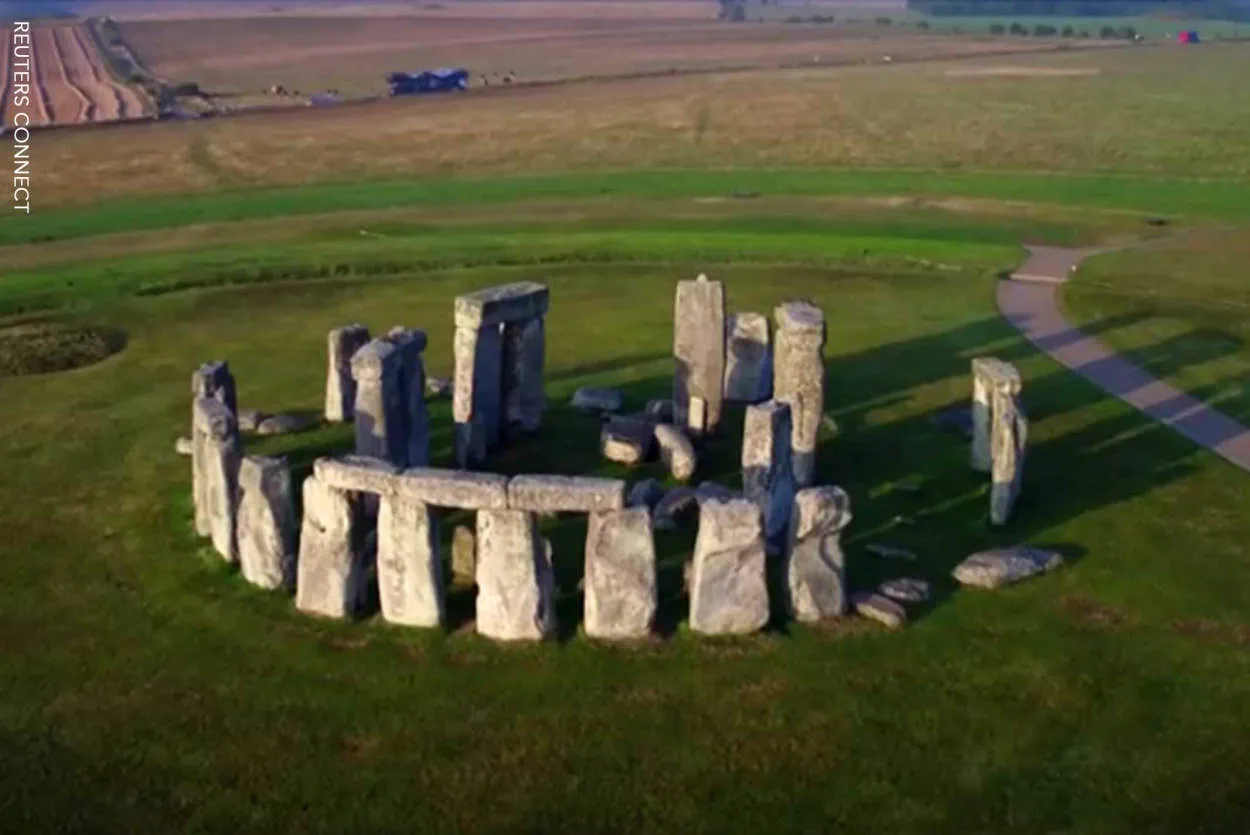The Enigmatic Stonehenge: A Megalithic Mystery is an intriguing exploration into the ancient structure that has baffled researchers and historians for centuries. This article delves into the significance, theories, and enigmas surrounding one of the world’s most iconic prehistoric monuments.
Unlocking the Secrets of Stonehenge
Stonehenge, one of the world’s most famous prehistoric monuments, continues to captivate historians, archaeologists, and visitors alike. This ancient megastructure, located in Wiltshire, England, has stood for thousands of years, preserving its enigmatic allure. The mysteries surrounding Stonehenge have sparked countless theories and speculations, but the truth behind its construction and purpose remains shrouded in obscurity.
Believed to be built between 3000 and 2000 BCE, Stonehenge is composed of large standing stones arranged in circular and horseshoe-shaped patterns. The exact techniques used by our ancestors to transport and position these colossal stones still baffle experts. Each stone weighs several tons, making their placement an impressive feat of engineering for its time.
One prevailing theory suggests that Stonehenge served as a burial ground, evident by the presence of cremated human remains in the surrounding area. However, this does not fully explain the complexity of its design or the astronomical alignments observed within the monument. It is suspected that Stonehenge had significant religious or ceremonial significance, possibly linked to ancient beliefs surrounding the sun, moon, and celestial events.
Modern technology, such as carbon dating and ground-penetrating radar, has unveiled additional insights into Stonehenge’s history. Excavations and research have revealed that the site underwent multiple construction phases over centuries, with each alteration adding to its mysterious allure. The surrounding landscape, with its numerous burial mounds and ancient pathways known as “avenues,” further contribute to the enigma.
Despite decades of research and speculation, the true purpose of Stonehenge remains elusive. The site continues to inspire fascination and intrigue, drawing tourists and researchers from around the globe. Unlocking the secrets of Stonehenge may require future discoveries and breakthroughs, but for now, the monument stands as a testament to the ingenuity and curiosity of our ancient ancestors.
Theories and Speculations Surrounding Stonehenge
Stonehenge, the ancient stone circle located in Wiltshire, England, has long fascinated archaeologists, historians, and enthusiasts alike. This megalithic monument, constructed around 2500 BC, continues to spark numerous theories and speculations regarding its purpose and origin.
Astronomical Observatory
One prevailing theory suggests that Stonehenge was built as an astronomical observatory. The alignment of the stones with the sun and moon cycles supports the idea that it served as a celestial calendar. This theory is further supported by the positioning of certain stones that indicate solstices and equinoxes.
Religious and Ritualistic Site
Another popular belief is that Stonehenge was a sacred site where religious and ritualistic ceremonies took place. The mysterious layout of the stones, combined with evidence of ancient burial mounds nearby, indicates that it could have been a place of spiritual significance and worship.
Burial Ground
Some experts propose that Stonehenge was primarily used as a burial ground. Excavations have uncovered cremated human remains near the monument, suggesting that it may have served as a final resting place for the elite or esteemed individuals of the time.
Healing and Spiritual Center
There is also speculation that Stonehenge acted as a healing and spiritual center. The presence of natural springs in the vicinity, combined with the belief in the healing properties of certain stones, supports the idea that people may have sought out Stonehenge for its therapeutic benefits.
Architectural Marvel
Lastly, some argue that Stonehenge was simply an impressive architectural marvel, a demonstration of ancient engineering skills. The precision with which the massive stones were positioned suggests a high level of craftsmanship and knowledge of construction techniques for that era.
Overall, Stonehenge remains a captivating mystery with many theories and speculations surrounding its purpose and significance. As more discoveries and research take place, we hope to uncover the true nature of this iconic megalithic monument.
Visiting the Iconic Stone Circle of Stonehenge
Stonehenge, located in Wiltshire, England, is one of the world’s most famous and enigmatic ancient structures. This megastructure consists of a circular arrangement of standing stones, some weighing up to 25 tons, which have puzzled archaeologists and historians for centuries.
Visiting Stonehenge offers a unique opportunity to witness this marvel of human engineering and spirituality. The ancient site provides a captivating window into the past and sparks the imagination with its mysterious origins and purpose.
Walking through the Stone Circle, visitors can’t help but feel a sense of awe and wonder. The sheer size of the stones and the precision with which they were placed raises countless questions about the Neolithic people who built this monumental monument thousands of years ago.
While the true purpose of Stonehenge remains a subject of debate, various theories suggest that it served as a ceremonial site, a burial ground, or an astronomical observatory. The alignment of the stones with the movements of the sun and moon adds to its mystique.
Exploring the Stonehenge Visitor Centre, tourists can learn more about the history and significance of this UNESCO World Heritage Site through informative displays and interactive exhibits. Archaeological findings and virtual reconstructions shed light on the construction techniques used by our ancestors and their beliefs.
For an enhanced experience, guided tours are available, providing in-depth knowledge and context to the site. These tours unravel the mysteries surrounding Stonehenge, offering a deeper understanding of its cultural and historical importance.
Visitors should plan their trip in advance as Stonehenge can get crowded, particularly during peak tourist seasons. Nonetheless, witnessing this ancient marvel up close is an unforgettable experience that connects us to our ancient past and leaves us pondering the secrets locked within the stones.
Conclusion
The mystery surrounding Stonehenge continues to captivate the minds of researchers and visitors alike. Despite extensive studies, the true purpose of this megalithic structure remains elusive. Whether it served as an astronomical observatory, a sacred burial ground, or a monument to an ancient civilization, Stonehenge remains an enigmatic marvel of human engineering and imagination.




